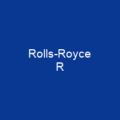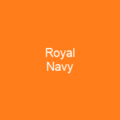The Enigmatic Anthony Roll: A Tudor Naval Treasure
Imagine a time when the English navy was not just a fleet of ships but a meticulously documented collection of vessels, each with its own story to tell. This is where we find ourselves delving into the fascinating world of the Anthony Roll, a written record that captures the essence of Tudor naval power in the 1540s.
The Creation and Purpose of the Anthony Roll
Who was behind this remarkable document? The roll, created by an official named Anthony Anthony, serves as more than just a historical record; it is a window into the naval might of King Henry VIII’s era. This Anthony Roll consisted of three vellum rolls that detailed ship size, crew, armament, and equipment—essentially providing a comprehensive inventory for the royal navy.
A Turbulent Journey Through Time
What happened to this invaluable document after its creation? The roll’s journey through history is as intriguing as it is complex. Initially part of the royal library, it was later given to Samuel Pepys in 1680, who cut it up and bound it into a single volume. The third roll found its way to Lady Mary Fox before being sold to the British Museum in 1858, while the first two rolls were eventually acquired by the British Library.
Artistic Value and Practical Use
The Anthony Roll is not just a historical document; it’s an artistic masterpiece. Its illustrations are characterized by ‘naive draughtsmanship and conformity to a pattern,’ yet they provide invaluable secondary information on Tudor heraldry, flags, and ship ornamentation. These images were inspired by contemporary maps known as ‘plats’ that often featured detailed pictures of ships.
Anthony Anthony: The Compiler
Who was responsible for compiling this document? Through his signature and comparison with holograph letters among the State Papers, Anthony Anthony is identified as the compiler. His father, William Anthony, who had migrated to England from Flanders in 1503, also played a role in shaping the roll’s content.
The Role of the Roll in Tudor Naval History
How did this document serve practical and ceremonial purposes? The Anthony Roll was part of a genre intended to support both practical needs, such as inventory management, and ceremonial functions for the king and military leadership. Contemporary maps often featured detailed pictures of ships to mark bodies of water and decorate scenes.
Illustrations and Their Significance
The roll’s illustrations include naval actions and expeditions, closely matching designs in other naval rolls. For instance, three plats attributed to Anthony depicted naval actions: Anne of Cleves’ route from the Low Countries to England (1539), a French attack on a coastal fort, and a French raid on Brighton (July 1545).
Preservation and Transformation
What happened when Samuel Pepys got his hands on these rolls? In 1680, Charles II gave two of the rolls to Samuel Pepys, who was planning a history of the navy. The second roll went missing in the 1780s but eventually resurfaced and is now stored at St Pancras. Pepys’ clerks cut up the rolls and bound them together, causing some damage to the illustrations.
Details and Accuracy
The first two rolls were transformed into a single volume with abstracts inserted between the two rolls and a summarizing table added by Pepys. The three rolls list 58 ships divided into classes based on size and construction, providing detailed information about their tonnage, crew size, and war equipment.
Conclusion: A Unique Historical Source
The Anthony Roll is a unique historical source, offering the only fully illustrated list of a Tudor period royal navy. While its accuracy should not be taken as exact depictions drawn from real life, it provides invaluable insights into the flags used on King Henry VIII’s ships and the size of his navy. Despite some damage caused by Pepys’ binding, this document remains an essential primary source for historians studying 16th-century naval history.

You want to know more about Anthony Roll?
This page is based on the article Anthony Roll published in Wikipedia (retrieved on November 28, 2024) and was automatically summarized using artificial intelligence.







